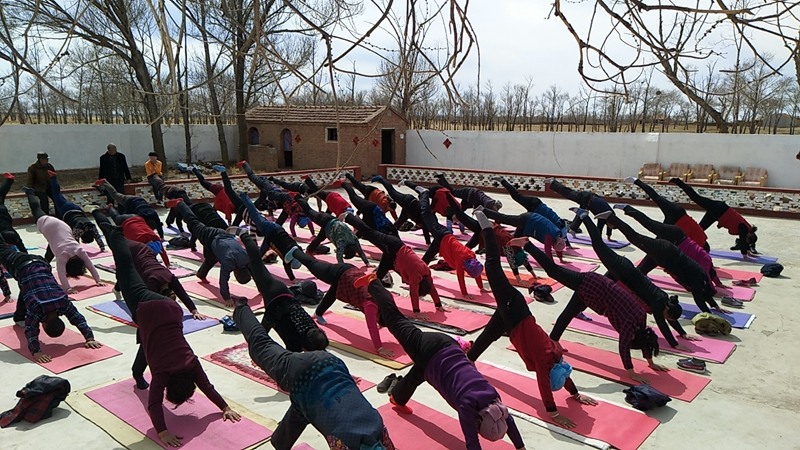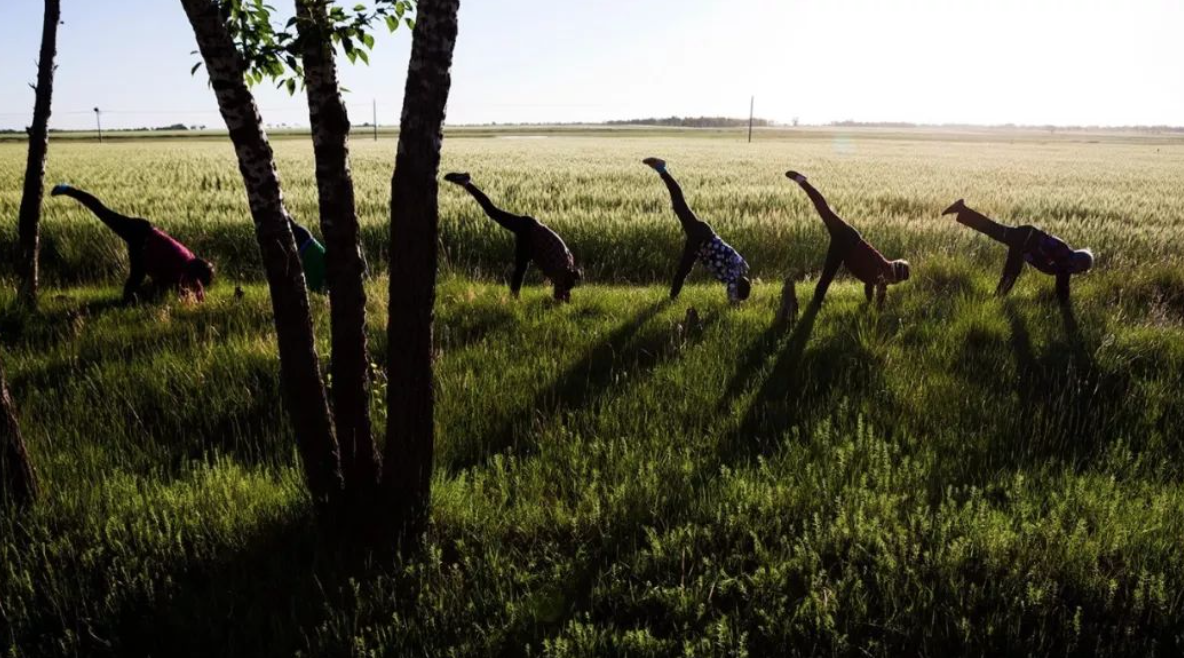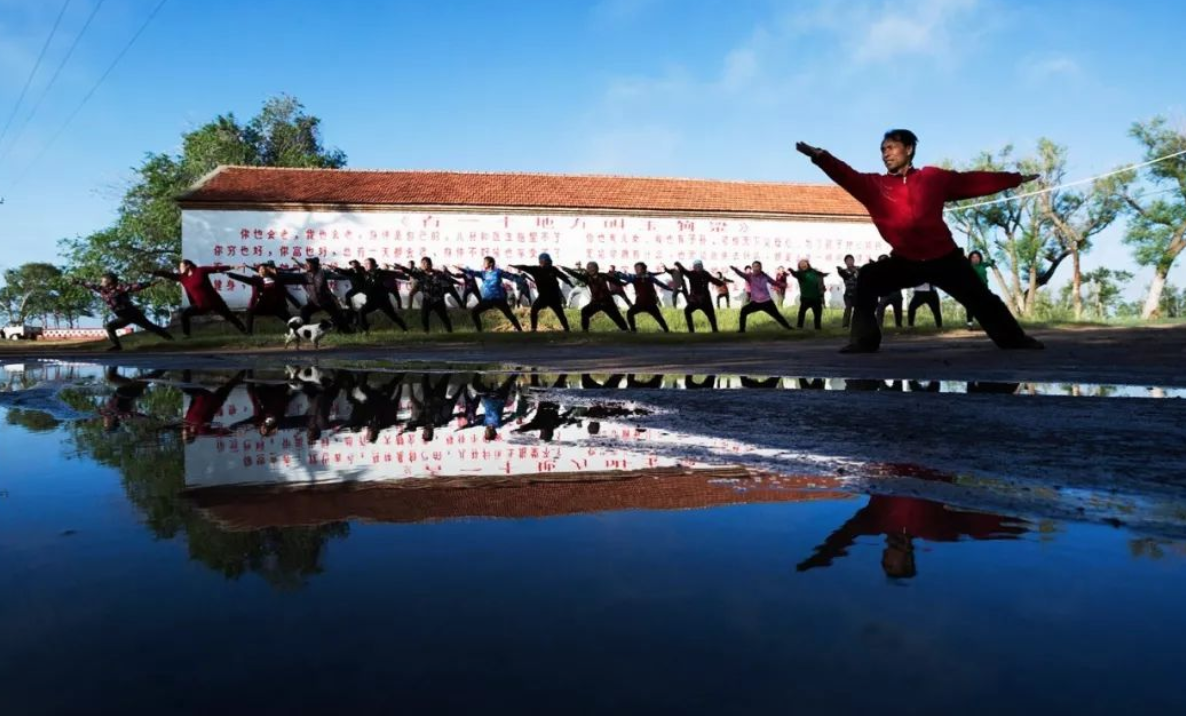Yugouliang, a village in Zhangbei county, in north China’s Hebei province, was once a State-level, impoverished village. It has shaken off poverty, and it is now known as the “Pioneering Village of Yoga in China.” Why? The villagers practice yoga together – before and after work every day – to stay healthy.

In Yugouliang, the harvests are poor, as they are affected by climatic conditions in the Bashang area of the Inner Mongolia Plateau. Most of the region’s young people have moved away from the village to become migrant workers in big cities.
The arrival of Lu Wenzhen, the first secretary of the village, changed the villagers lives. While going door-to-door to chat with residents, Lu discovered that every villager adhered to the traditional habit of pantui – sitting cross-legged on the bed. Inspired by his discovery, he came up with the idea of helping villagers build strong bodies by practicing yoga. Lu believed that only with healthy bodies could the villagers strive to rise up out of poverty. “If yoga is used to improve the health of the elderly, family spending on medical treatments will be greatly reduced,” Lu said.


Lu bought 100 yoga mats online and distributed the mats among the villagers for free, to encourage them to start practicing yoga. Every morning, more than 30 of them walked to the village square, bundled in jackets against the chill as the sun cleared the horizon. They assembled in a line around the edges of the square and then, for an hour, crouched and bent, extending their hands and balancing on concrete blocks in a yoga routine that most complete twice each day.


A video of villagers exercising has attracted a lot of attention on Chinese social media, with a video receiving 76,000 likes on Kuaishou, a Chinese TikTok-like platform.
Attention from outside the village boosted everyone’s morale, and desire to keep going, and the locals had a renewed sense of the importance of fitness. Doing yoga not only strengthened their bodies and helped change their mental outlook, it also lightened their children’s burdens.



Yugouliang’s yoga story has been approved by the General Administration of Sport of China, and it has attracted the attention of Chinese and international media, including China Daily, the New York Times, the Globe and Mail and Hindustan Times. As a result of the many media reports, the village quickly rose to fame.
“Residents who used to gather to talk and play mahjong or cards during their free time are now doing yoga,” Lu says. Yoga lovers, from all over the country, flock to the village to experience this unique style of rural yoga.

The local anti-poverty work group and the village committee worked together to formulate the long-term development plan to build health-care facilities, and to improve infrastructure, including the roads, the environment, and street lighting, which gave the village a new look.
The “yoga village” continues to embrace unprecedented development opportunities, many of which result from both the increasingly convenient transportation and the progress of regional — Beijing, Tianjin and Hebei -integration. Those who have been to Yugouliang will be impressed with the local people’s heartfelt happiness, satisfaction and confidence.

(Photos from www.thepaper.cn)


